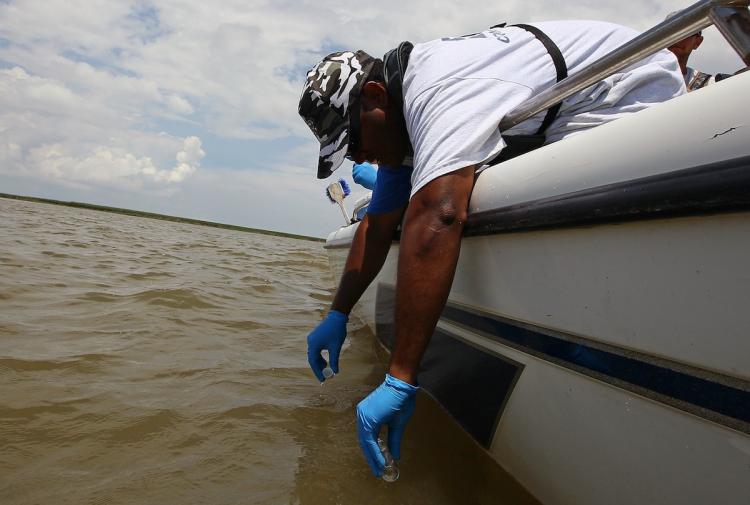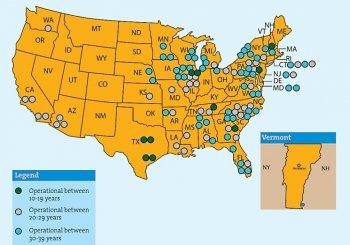Environmental advocacy groups in the United States have voiced concerns that the Environmental Protection Agency (EPA) has worsened in its Criminal Investigation Division(CID) under the Obama administration, noting a decline in the number of criminal investigators and convictions since 1999.
These allegations come at a sensitive time, with the wound of BP’s recent oil spill, which was allegedly caused by violations of environmental laws, fresh in the public’s mind.
Many are concerned that though Obama promised to bolster the monitoring of corporations’ compliance with environmental laws in response to the BP oil spill, he has failed to deliver on that promise.
“Contrary to promises to beef up prosecution of polluters, the U.S. Environmental Protection Agency criminal enforcement program is withering under the Obama administration, according to records released today by Public Employees for Environmental Responsibility (PEER),” read a press release from PEER, an organization of local, state, and federal scientists, law enforcement agents, land managers, and other public officials who monitor the implementation of environmental laws.
PEER’s records indicate that criminal investigators working for the Criminal Investigation Division (CID) of the EPA, the main body responsible for enforcing and monitoring the execution of environmental laws by corporotations such as BP, has decreased in its number of agents since 1999.
“It is simple, without pollution cops on the beat, polluters go free,” said Florida PEER Director Jerry Phillips, a former state enforcement attorney in a statement.
The number of convictions for environmental offenders decreased by 25 percent from 1999 to 2009, according to the PEER press release. It is not mentioned whether this observed decline in the number of convictions was due to a lack of law enforcement agents or to a decline in the number of offenses.
The U.S. Pollution Persecution Act of 1999 requires at least 200 criminal investigators to be working for the EPA’s CID, stating, “The program will increase the number of agents to complete its three-year hiring strategy of raising its special agent workforce to 200 criminal investigators.”
Internal problems and an overemphasis on the internal operations of the organization also hinder CID’s ability to take on prosecution cases of environmental offenders, says PEER. “Besides staffing and resources, CID needs leadership that helps rather than hinders its special agents in making busts that stick,” said Phillips.
The CID did not respond to requests for an interview.
But the EPA says that it opened 387 new environmental crime cases in 2009, the largest number of criminal case initiations in five years, according to an emailed statement from the agency.
“Vigorous criminal enforcement that targets the most serious threats to the American people—whether they are hazards in the water we drink, the air we breathe, or the chemcials around us—is an EPA priority,” the EPA said. “The number of cases initiated is one measure of a program’s success—as is EPA’s 90% conviction rate.”
These allegations come at a sensitive time, with the wound of BP’s recent oil spill, which was allegedly caused by violations of environmental laws, fresh in the public’s mind.
Many are concerned that though Obama promised to bolster the monitoring of corporations’ compliance with environmental laws in response to the BP oil spill, he has failed to deliver on that promise.
“Contrary to promises to beef up prosecution of polluters, the U.S. Environmental Protection Agency criminal enforcement program is withering under the Obama administration, according to records released today by Public Employees for Environmental Responsibility (PEER),” read a press release from PEER, an organization of local, state, and federal scientists, law enforcement agents, land managers, and other public officials who monitor the implementation of environmental laws.
PEER’s records indicate that criminal investigators working for the Criminal Investigation Division (CID) of the EPA, the main body responsible for enforcing and monitoring the execution of environmental laws by corporotations such as BP, has decreased in its number of agents since 1999.
“It is simple, without pollution cops on the beat, polluters go free,” said Florida PEER Director Jerry Phillips, a former state enforcement attorney in a statement.
The number of convictions for environmental offenders decreased by 25 percent from 1999 to 2009, according to the PEER press release. It is not mentioned whether this observed decline in the number of convictions was due to a lack of law enforcement agents or to a decline in the number of offenses.
The U.S. Pollution Persecution Act of 1999 requires at least 200 criminal investigators to be working for the EPA’s CID, stating, “The program will increase the number of agents to complete its three-year hiring strategy of raising its special agent workforce to 200 criminal investigators.”
Internal problems and an overemphasis on the internal operations of the organization also hinder CID’s ability to take on prosecution cases of environmental offenders, says PEER. “Besides staffing and resources, CID needs leadership that helps rather than hinders its special agents in making busts that stick,” said Phillips.
The CID did not respond to requests for an interview.
But the EPA says that it opened 387 new environmental crime cases in 2009, the largest number of criminal case initiations in five years, according to an emailed statement from the agency.
“Vigorous criminal enforcement that targets the most serious threats to the American people—whether they are hazards in the water we drink, the air we breathe, or the chemcials around us—is an EPA priority,” the EPA said. “The number of cases initiated is one measure of a program’s success—as is EPA’s 90% conviction rate.”




